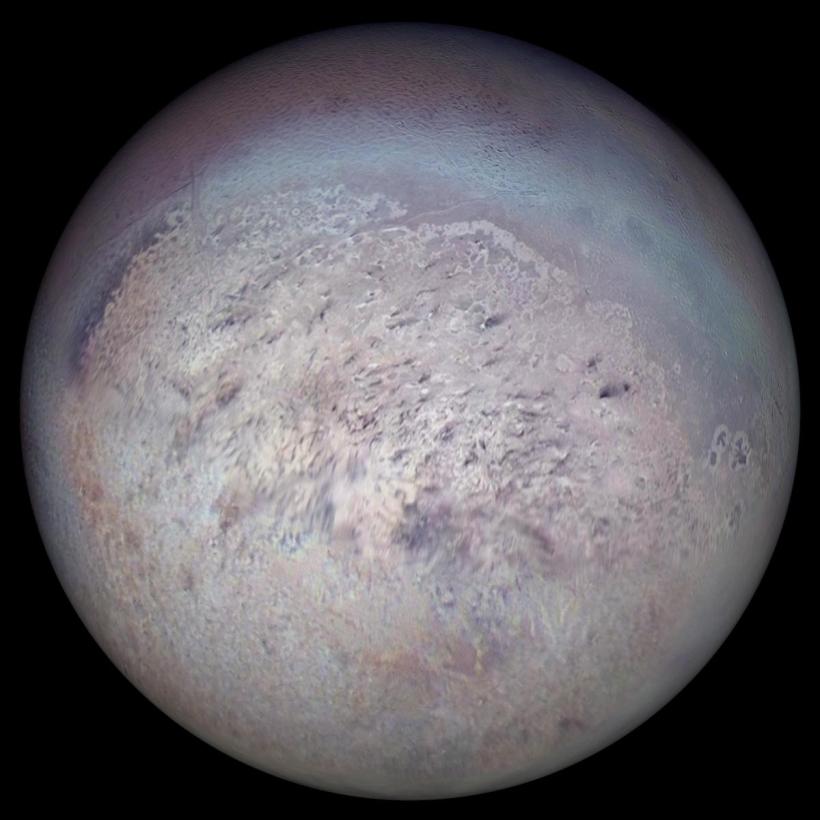
The Kuiper Belt is a disc in the solar system, extending from Neptune’s orbit to 50 AU from the Sun. The belt is like an asteroid belt, but it is far larger and more massive, containing many small bodies and remnants from the formation of the solar system. As expected, most objects in the Kuiper Belt tend to stay in it, however, there is evidence that an object from the Kuiper Belt made its way out of the belt and inside of Neptune’s orbit. This object is known as Triton, and is one of Neptune’s moons. Triton was discovered in 1846, only 17 days after Neptune itself was discovered. Triton, if not taken into Neptune’s orbit, would have been classified as a dwarf planet and actually has a composition quite similar to Pluto. Triton has many interesting qualities, the first being that it is the only known moon in the solar system with retrograde orbit. This means that Triton orbits Neptune in the opposite direction that Neptune spins. Triton is similar to most moons on the outskirts of the solar system in that it has a rocky, icy composition, however, it is very unique given that it is geologically active. Its geologically activity causes a phenomenon known as cryovolcanism, where geyser-like volcanic vents break through the crust and spray nitrogen gas. Due to our lack of knowledge of Triton’s past, it is hard to say with certainty, but some astrobiologists even speculate that Triton may have water under its icy surface.
Here is a helpful video explaining some basic facts about Triton.
Sources:
I think that the observations of the distant planets and moons etc (such as Neptune, Triton and Kuiper Belt objects) that have been gathered thus far are fascinating, but I think that further exploration could yield so much more information about things like Triton’s retrograde orbit and other space oddities in that region. Hopefully further research and exploration in that area will occur soon. I am also very curious to find out what else we will learn from the Kuiper Belt, and what other things may emerge from it, such as Planet 9.
LikeLike
I think it is so interesting to think about how Triton is one of the harder objects to qualify, because in some ways it fits as a planet, dwarf planet, and a moon. Triton has so many oddities about it; it’s has retrograde motion and is geologically active making it so hard to specific what it is.
LikeLike
It is interesting that while our moon is gradually moving away from the Earth, Triton is gradually moving towards Neptune and the two will eventually collide. This process will take billions of years, but given the rate at which humanity has developed I’m willing to bet that a few billion years is more than enough time to learn more about and perhaps even visit Triton.
LikeLike